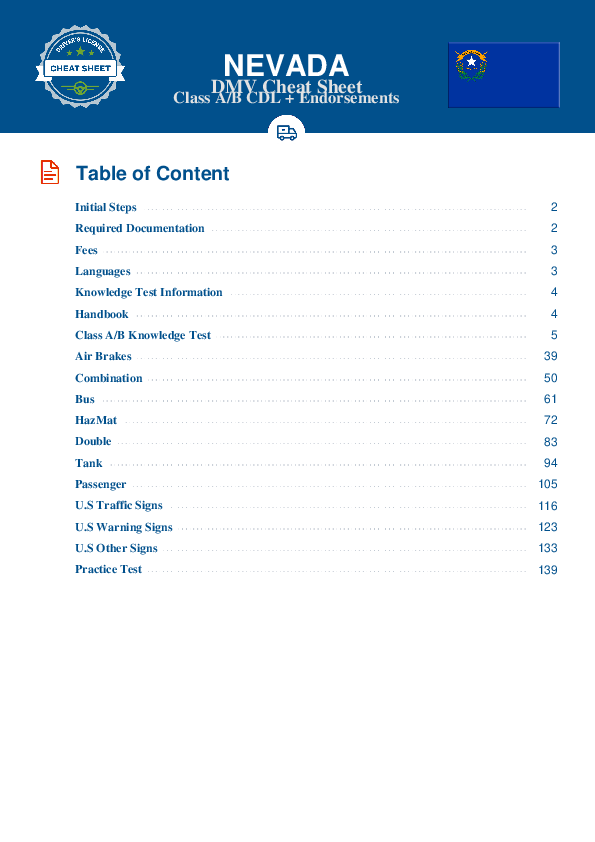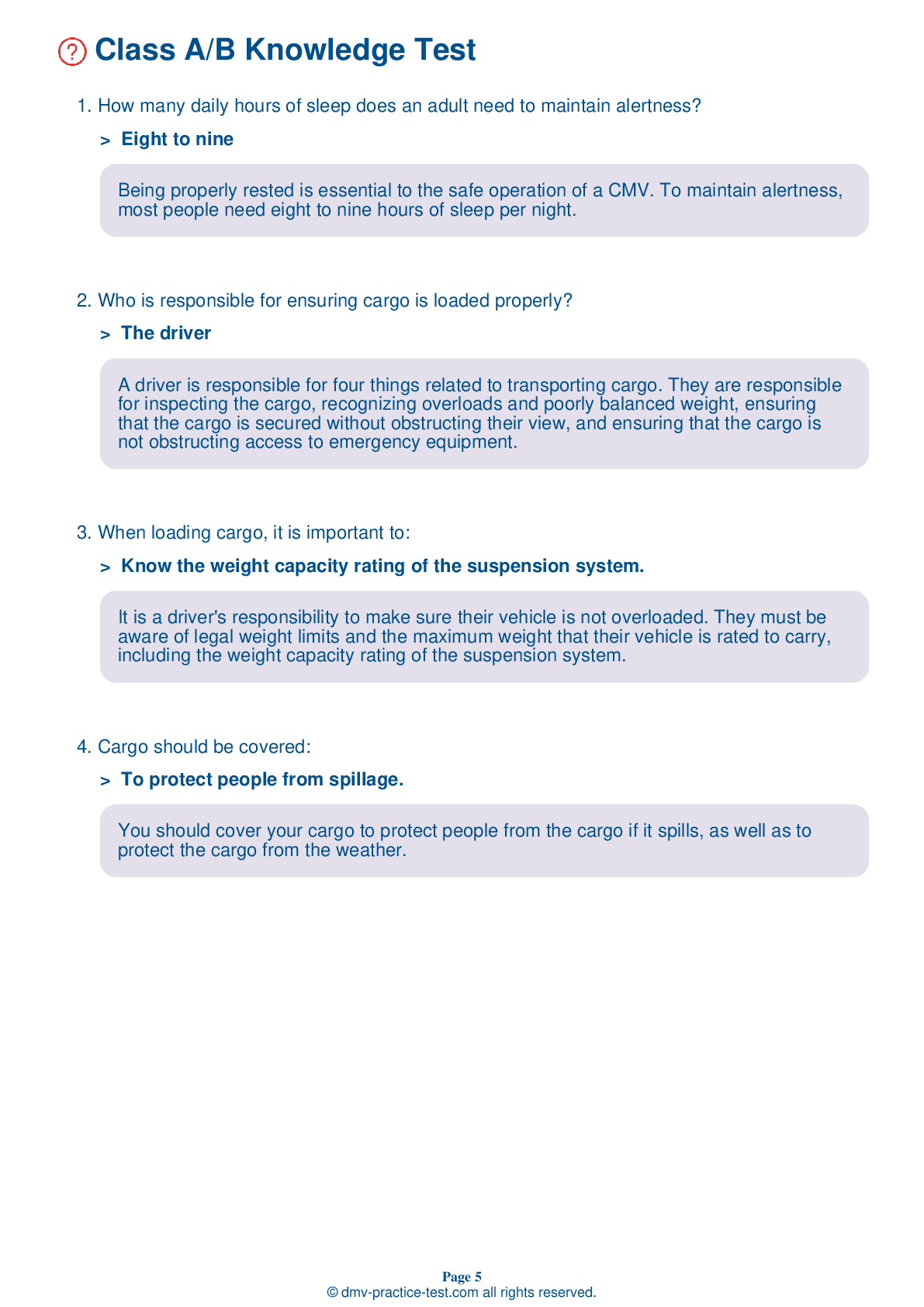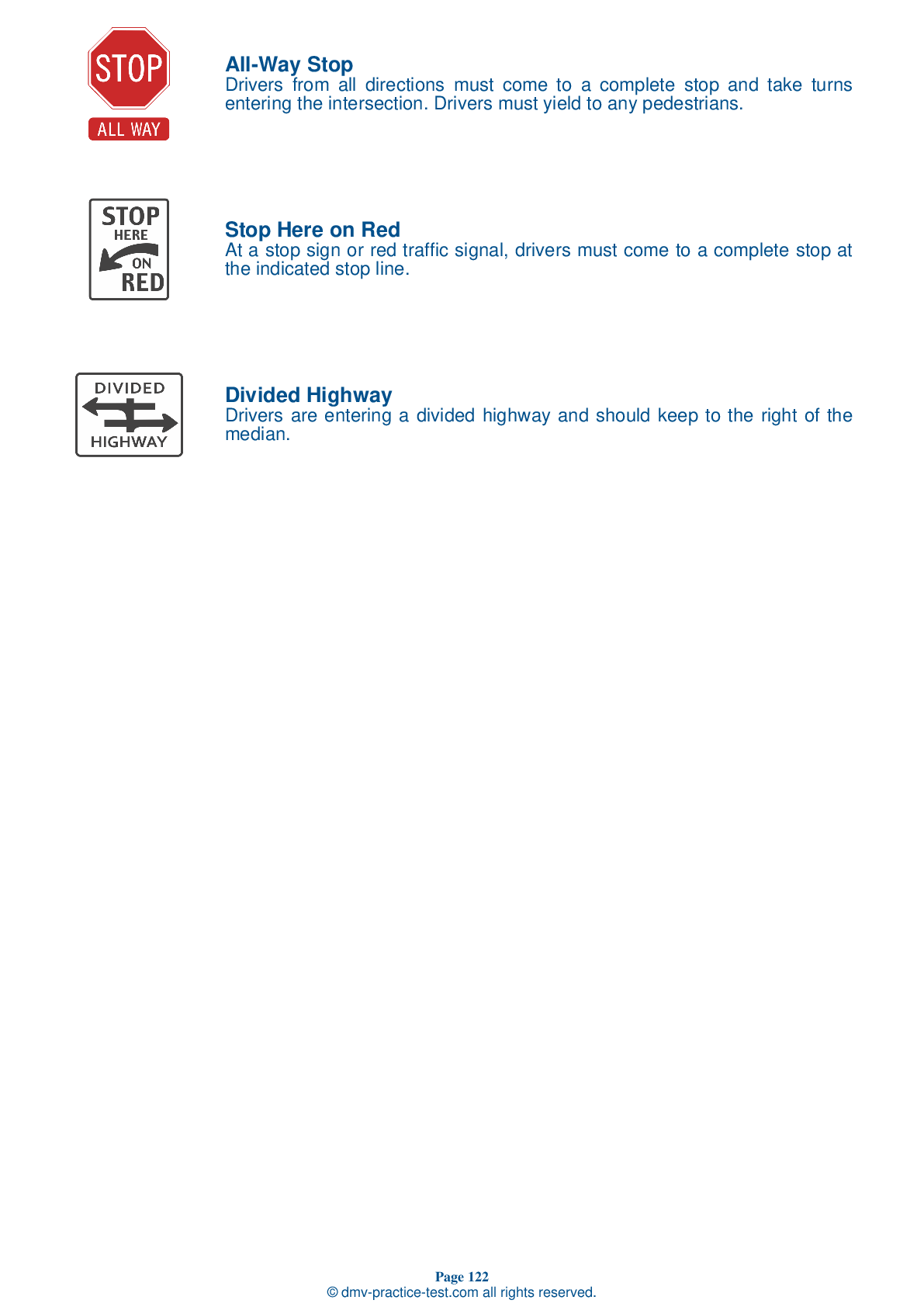Class B Driving Test | Nevada 2025 #2 Page 7 of 7
Train for FREE online with our Nevada class B license test. The official exam test consists of several obligatory parts, with all of them checking your knowledge of different blocks of road rules. If you need to obtain a NV CDL class B permit in 2025, practice as much as possible. Free sample tests published on our website will help you check and improve your knowledge and boost your grades. Please bear in mind that CDL class B requirements may vary from state to state.
43 . What can happen if your vehicle has a high center of gravity?
The height of a vehicle's center of gravity is very important. A high center of gravity (cargo piled up high or heavy cargo on the top of a load) increases the possibility of your vehicle tipping over.
44 . What color are ABS malfunction lamps?
Vehicles with Anti-Lock Braking Systems (ABS) have yellow malfunction lamps.
45 . As part of the vehicle inspection test, a CDL applicant may be asked to:
While testing for a CDL, an applicant will be required to go through a full vehicle inspection. The vehicle inspection test will include an engine oil level check.
46 . The tire load for a tire is stated:
The tire load, or the maximum safe weight that a tire can carry at a given pressure, is stated on the side of each tire.
47 . During a trip, gauges are:
During a trip, you should regularly check the gauge and instrument panels, mirrors, tires, cargo, and lights for signs of trouble.
48 . When loading a trailer, it is important to:
When loading cargo, it is important that the weight placed on each axle is neither too little nor too much. Inappropriate loading can interfere with steering, create inadequate wheel traction, or damage the axles.
49 . Truck tractors with air brakes built on or after March 1, 1997 must have:
Truck tractors with air brakes built on or after March 1, 1997 must be equipped with Anti-Lock Braking Systems (ABS).
50 . Regardless the size of the cargo, it should be secured by at least ____ tie-down(s).
Cargo that is required to be tied down should be secured by at least one tie-down for every 10 feet of cargo length. However, at least two tie-downs should be used no matter how small the cargo is.
See the exact questions that will be on the 2025 Nevada DMV exam.
99.2% of people who use the cheat sheet pass the FIRST TIME
Lillian MCcranie explains how our CDL study guide was helpful in passing the exam and recommends it to everyone.
Cameron tells us how he purchased the CDL exam, and found it to be a useful tool which helped him pass the exam and find a job.



